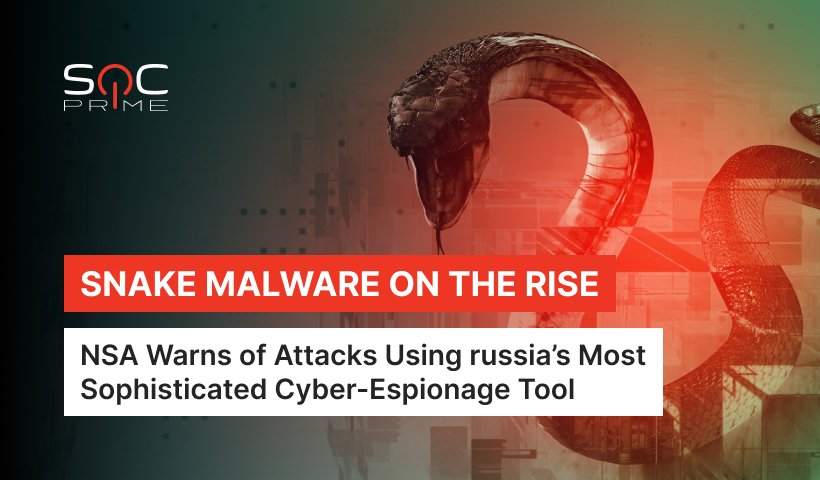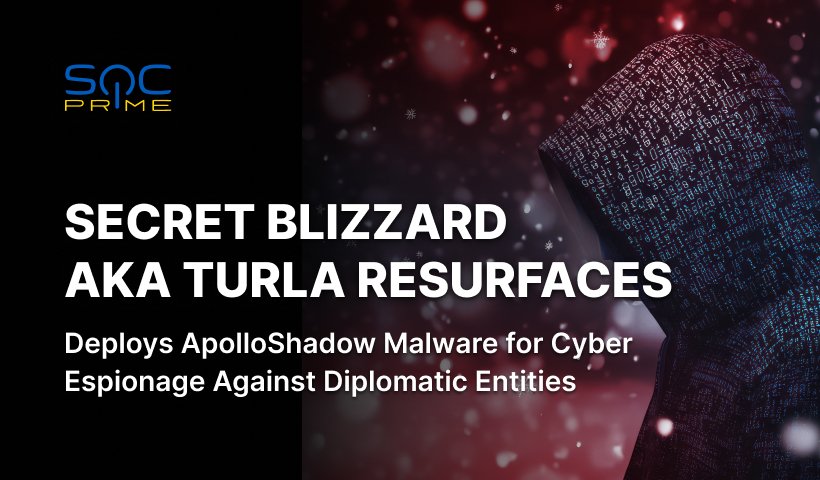Snake Malware Detection: Cyber-Espionage Implant Leveraged by russia-Affiliated Turla APT in a Long-Lasting Campaign Against NATO Countries

Table of contents:
On May 9, 2023, the U.S. Department of Justice revealed the details of a joint operation dubbed MEDUSA that resulted in the disruption of the Snake cyber-espionage implant infrastructure actively leveraged to target 50+ countries in North America, Europe, and Africa.
First emerging in 2003, the malicious tool has been used by the Turla group, linked to the Federal Security Service of the russian federation (FSB), to proceed with attacks against various targets of interest, including NATO member governments. Following the disruption of the Snake campaign, the National Security Agency (NSA) and several partner agencies urged organizations to take relevant actions aimed at detecting and mitigating malicious activity linked to Snake.
Detect Snake Malware Used by russia-Affiliated Threat Actors
With the infamous Snake implant being the most advanced cyber-espionage tool leveraged by russian FSB and covered in the latest joint CSA AA23-129A, the global cyber defender community needs to boost awareness and increase cyber resilience to help organizations timely identify the related adversary activity. SOC Prime’s Detection as Code platform empowers organizations to drive collective cyber defense to ensure a safer cyber future by continuously enriching its Threat Detection Marketplace with curated Sigma rules for emerging threats. To help cyber defenders proactively defend against russia-linked Snake malware, the SOC Prime Team has recently released an extensive collection of relevant context-enriched Sigma rules.
All Sigma rules within this detection stack are filtered by the custom tags “AA23-129A” and “Snake_Malware” based on the corresponding CSA code and the payload name to enable a simplified search for detection algorithms.
By clicking the Explore Detections button below, security teams can gain instant access to the entire collection of Sigma rules for Snake malware detection. The detection algorithms are aligned with MITRE ATT&CK v12, cover multiple log sources, and are applicable to the industry-leading SIEM, EDR, and XDR solutions. Security engineers can also dive into relevant metadata, including ATT&CK and CTI references, for streamlined threat investigation.
Snake Malware Analysis
Considered FSB´s most notorious long-lasting cyber-espionage malware sample, Snake has been active for at least 20 years, covertly targeting organizations of interest for russian federation. The list of victims includes NATO public sector orgs, journalists, media representatives, educational institutions, and small businesses. Critical infrastructure, finance, manufacturing, telecom sectors have been affected as well.
According to security researchers, Snake malware first popped up in the malicious arena in 2003-2004 under the moniker of Uroburos. Being linked to the Turla hacking collective within FSB’s Center 16, the implant has been continuously used by adversaries to steal sensitive information & documents and deploy additional malicious software through a covert peer-to-peer network. It is typically deployed with the help of public-facing infrastructure nodes on the targeted network. Further, Snake utilizes other tools and TTPs on the internal network to proceed with the malicious activity.
Through Operation MEDUSA, the FBI managed to disrupt all the impacted systems within the U.S., while outside the country, the agency coordinated with the local authorities to provide detection and remediation guidance and remove the Snake implant. As detailed in the Department of Justice note, FBI experts developed a dedicated tool called PERSEUS that is able to force Snake malware to disable itself and terminate without causing any harmful effect to the host computer or affiliated applications.
U.S. Agencies and allies have issued a joint advisory helping affected organizations to spot russian Snake malware infrastructure and take mitigation measures.
With the growing volumes of cyber attacks launched by russia-affiiliated offensive forces, cyber defenders need ultra-responsiveness to proactively defend against the aggressors’ malicious activity. SOC Prime offers a broad collection of Sigma rules against russian state-sponsored APTs, along with 50 curated detection algorithms tailored to the organization’s security needs. Get the charity-based Sigma2SaveLives subscription with 100% of the revenue donated to provide focused aid for the Ukrainian people while significantly boosting your cybersecurity posture.



